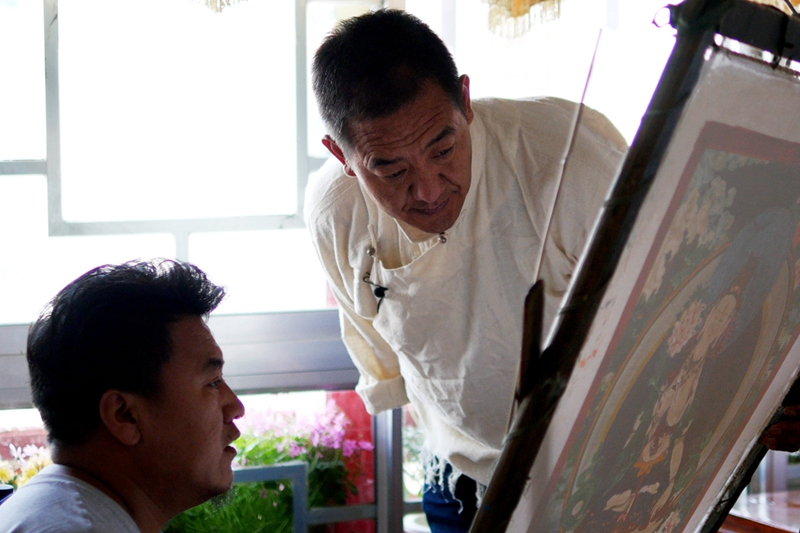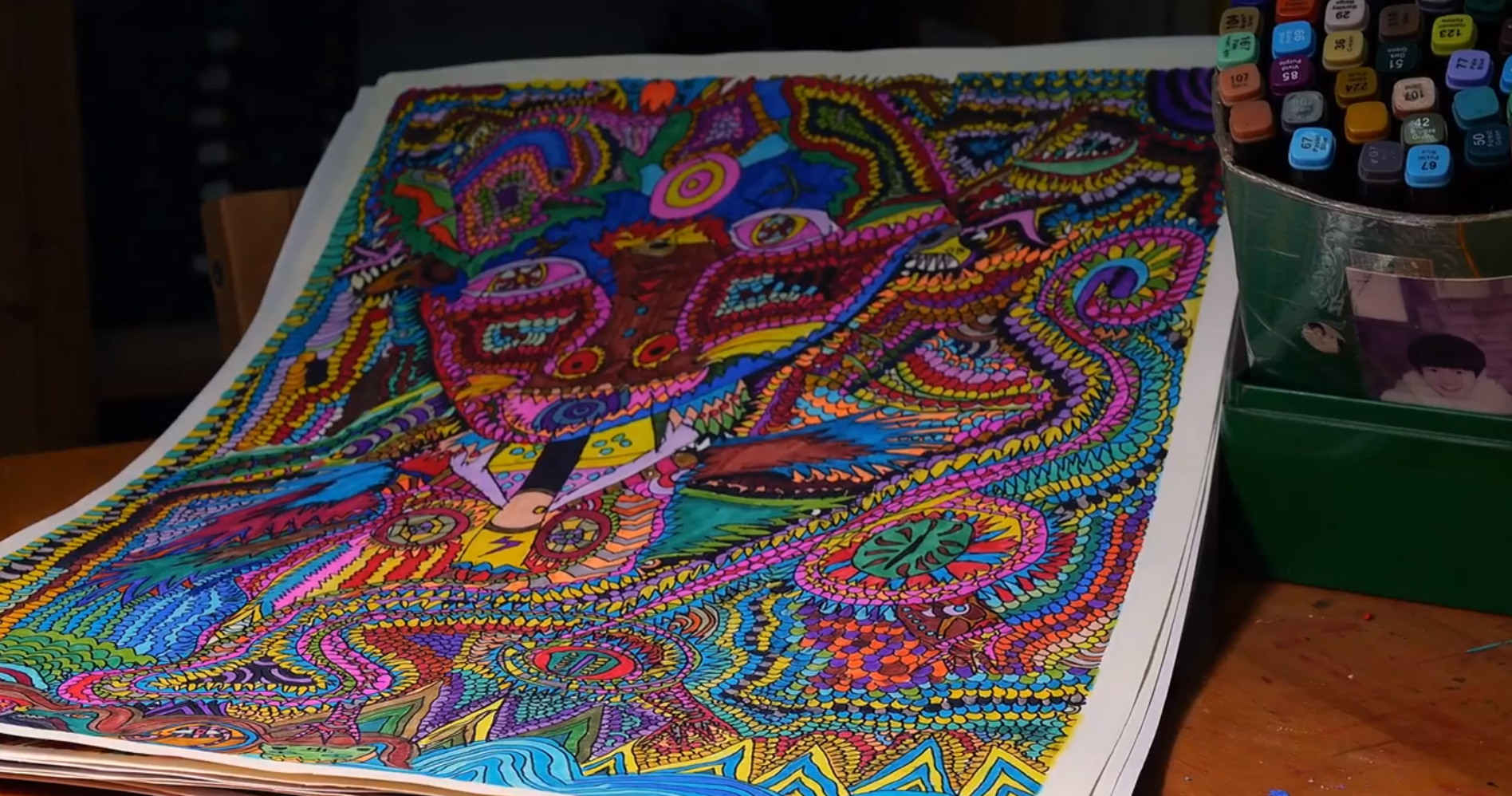
Master Norbu Sidar (right) watches one of his students paint a thangka at the Tibetan Thangka Academy in Lhasa, Tibet autonomous region. LODEN/XINHUA
Inheritors of the craft see value in its history and insist on creating them the traditional way
In his teenage years, thangka master Norbu Sidar recited vast sutras from Buddhist scriptures, and also made sure that his nephews Konchoge and Tsering did the same.
Born into a family of thangka painters in Shigatse, a city in the Tibet autonomous region, they are following in the footsteps of their ancestors to continue the craft.
Thangka is a Tibetan Buddhist scroll painting on cotton or silk, which is painted with mineral and organic pigments derived from coral, agate, sapphire, pearl, gold and other materials so that the colors last for centuries. The art form dates back to the 10th century and paintings typically depict Buddhist deities.
Norbu Sidar is a renowned master at the Mensar school in Tibet. Mensar is one of four thangka schools, which focuses on the elaborate details in Buddhist images, landscapes, animals and garments.
He is the head of the Tibetan Thangka Academy in downtown Lhasa, which offers free classes to interested applicants, particularly those poor but talented apprentices from his hometown of Shigatse.
Konchoge, his nephew and deputy, is also a successful painter. He often sits for hours in front of a painter's easel to practice, and wants to become a highly acclaimed master.
"To paint a thangka, one needs to exert the power of the eyes, hands and heart with the utmost purity and show persistent attention to detail," Konchoge said.
Family roots
Norbu Sidar and Konchoge are the fourth and fifth generations of thangka painters from the Thutop family.
Thutop, who lived about 100 years ago in Tashigang village of Lhaze county in Shigatse, learned the basics of painting when he worked for a family in Lhasa.
After a few years, Thutop established his own style and began passing down the craft. His son, Dawa Dondrup, was a gifted painter and was invited to restore ancient paintings in the main hall of the Sagya Monastery in Tibet. Dawa Dondrup, who was Norbu Sidar's grandfather, inspired and trained the boy.
"When I was young, my grandpa was painting most of the time," Norbu Sidar said.
At the age of 12, Norbu Sidar already knew the sutras by heart. "I thought it was very boring to recite the books, but the elders in my family kept checking my recitations. I would get scolded if I was slipshod," he said.
He used burnt willow branches to draw on a board of white pigment before going on to practice coloring and completing lines for the thangka. He studied under his grandfather for six years.
As thangka paintings are highly geometric and leave little room for creativity, Norbu Sidar said that practice is the only way to make them perfect.
|






7740f3b5-9ecb-438e-9052-76cb2d4bb671.jpg)

